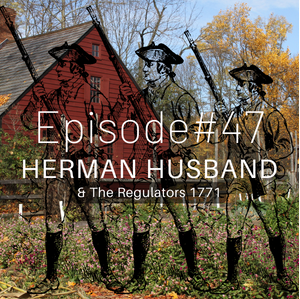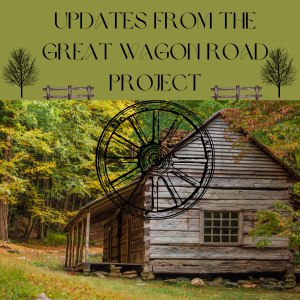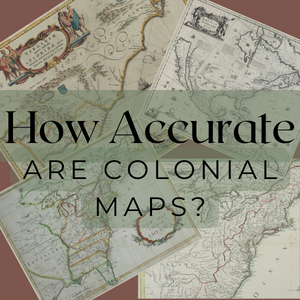One of the fascinating things about the Great Wagon Road Project is that the team is constantly researching a particular area all of the time. The long winter months have moved away, and the journey begins with several hot spots that are the main focus for the next few weeks. One of these embraces an old trail dating back per handwritten documentation to 1750 and resides in present-day Carroll County, Virginia. Today this old route takes on a completely different appearance versus the mid 18th century. Many changes forced the original road to move more towards the west, separating the authentic trail. Still, many sections of the old route allow the wheels of modern-day transportation. One only has to know where to look. Lying along the borders of North Carolina and Virginia, Flower Gap emerges from the rugged remnants of an upper Native American trail ranging from 1,900 feet to over 3,100 feet above sea level. For many years, the Flower Gap transported hundreds of families west to Kentucky and Tennessee.

Christopher Gist first mentions the road by name in his diary entry of May 1750. He states that he takes the Flower Gap as it is now a well-established road1 from Mulberry Fields, Wilkes County, North Carolina, to Roanoke, Virginia. Gist leaves at dawn and arrives in the area known as Roanoke today after nightfall. With later recordings of wagons taking three days to embark on a similar journey, Gist made excellent time with his trip. This route becomes very popular with the GWRP as a distinguishable confirmation proving its existence before 1751. The next question is how, why, and where is Flower Gap?

Flower Gap Road or Virginia State Highway 691 connects to Old Piper’s Gap Road in Cana, Virginia. After crossing Paul’s Creek, the road then empties into present-day Highway 52 or Fancy Gap Road. Several stories quickly come to mind with the above sentences. First of all, the name itself. One would think a family with this surname named the gap, but this is not the case. Instead, the word flower derives from flour. As families began settling the area, flour was a vital commodity. Flour sacks heavily packed on horseback traveled the road from the Yadkin River mills. One story states that a caravan of supplies moving through the area in early autumn named the route. As the party moved forward, one of the flour sacks caught a limb of a nearby tree spilling the precious cargo on the trail. Thus, the naming of Flour Gap or Flower Gap.6 What did the sellers of the flour gain from this expedition? Two things, pig iron, and lead. The terrain of southwestern Virginia allowed these two composites to thrive underground in mines. The early mining settlements were vital during these years leading to the American Revolutionary War. These items were used for trade, equivalent to currency, during the 18th century.

From Fisher River, Surry County, the road ran north. Straight up and over the Blue Ridge Mountains from north of Mt. Airy to present-day Fancy Gap, Virginia. Rugged and steep, the original trail headed straight up to the crest line, just as the majority of Native American pathways did centuries before. Years later, a stagecoach line operated on this route during the late 18th century and early 19th century. Ira Coltrane expressed his sentiments with the road during circa 1830 and proclaimed a much better way to travel, a “fancy” alternative. Years later, the result was Fancy Gap Highway. The old horse path of long ago forever changed a few miles to the west allowing new settlements, growth, and prosperity.

Going back further into time, discoveries of an earlier expedition into this area describes Wood’s Gap as Flower Gap in 1671. This trail leads west to the New River and Ingle’s Ferry, per the reference by Abraham Wood and Thomas Batts. With all of the gaps in this area, which one is the actual Flower Gap? The best way to describe Flower Gap’s location is to gaze just east of Sugar Loaf Mountain. Not to be confused with Low Gap, Flower Gap separates itself between Piper’s Gap and Fancy Gap. A Methodist traveling preacher, Francis Asbury, traveled the road frequently during 1788, 1790, and 1792. Asbury left a well-documented account of his travels, and his journal describes Elk Spur, Bear Trail Road, Orchard Gap, and Ward’s Gap as well. Asbury’s detailed descriptions state turning right at the Crooked Oak Moravian Church and following the narrow road up the mountain. Depending on the weather, alternate routes were available; Crooked Oak route was one of these. Located at the peak of Sugar Loaf Mountain stood Spencer’s Meetinghouse described in various sources listed below. Asbury assumed that Flower Gap inherited the name from earlier inhabitants such as Flower Swift. But, documents disprove this theory as the gap holds the title before the arrival of Flower Swift.

The American Revolutionary War materials mention Flower Gap numerous times. Many men marched this route to participate in the Battle of King’s Mountain during October 1780. Cornwallis planned a major attack using Flower Gap to achieve victory and capture the colony of Virginia.3 The United States Congress recognized Flower Gap during an 1817 session.2 Congress established a break in the ridge where the boundary of North Carolina and Virginia borders was known as the “Flour Gap” Congress further discusses the topic by reciting the story of the flour sacks traveling from the Yadkin River. The main question here is to address the Flower Gap Road as a candidate for the Great Wagon Road. Although the research for this road is nowhere near complete yet, enough evidence has surfaced to substantiate this route as a definite sidetrack of the Great Wagon Road. As the research continues with detailed early establishments and families from the period before 1750, the conclusion may very well change history. The Fry/Jefferson survey map of 1755, for the most part, demanded recognition as the latest and greatest information during that time. Discoveries of other survey maps from the same period remark the vast differences and missing characteristics from the Fry/Jefferson map. The project continues forward and the fascinating treasures along the Great Wagon Road.
Sources:
- The Journal of Christopher Gist 1750-1751
- United States Congressional Serial Set by the United States Government Printing Office p. 417
- Epley, Joe A Passal of Hate
- Berry, Ellen T Our Quaker Ancestors Published by Genealogical Publishing Company Baltimore, Maryland 1990
- Taliaferro, Hardin E Fisher’s River Published by Harper & Brothers New York New York 1859
- Nuckolls, B.F. Pioneer Settlers of Grayson County, Virginia The King Printing Company Bristol, Tennessee 1914 p.23











Love this article. You must know that the Hartley Mill was my family’s mill!!
LikeLiked by 1 person
Thank you. Very interesting.
LikeLiked by 1 person
Thank you for this history. I live in Charlotte, but have a home in Carroll County, VA, and when I drive there, I get off I77 at Route 620 near Lambsburg, go through Lambsburg, and then up the mountain gap road to Route 89 Pipers Gap Road. I had always heard that the road from Lambsburg up the mountain was Flour Gap. It ended at the top in a community named Drenn. Any comments about this road that I thought was Flour Gap? Janet Sarjeant
LikeLiked by 1 person